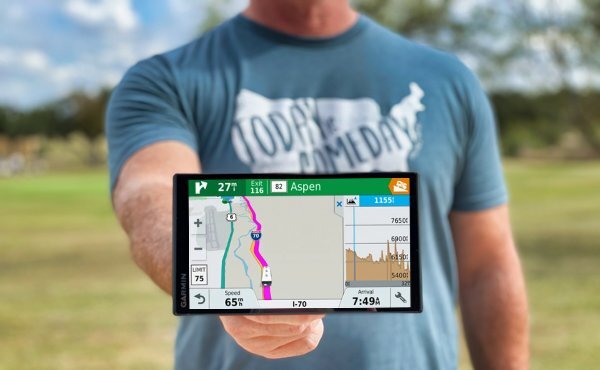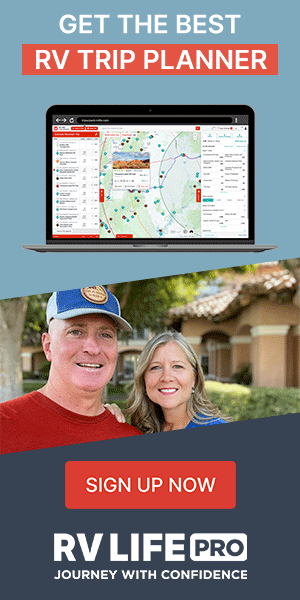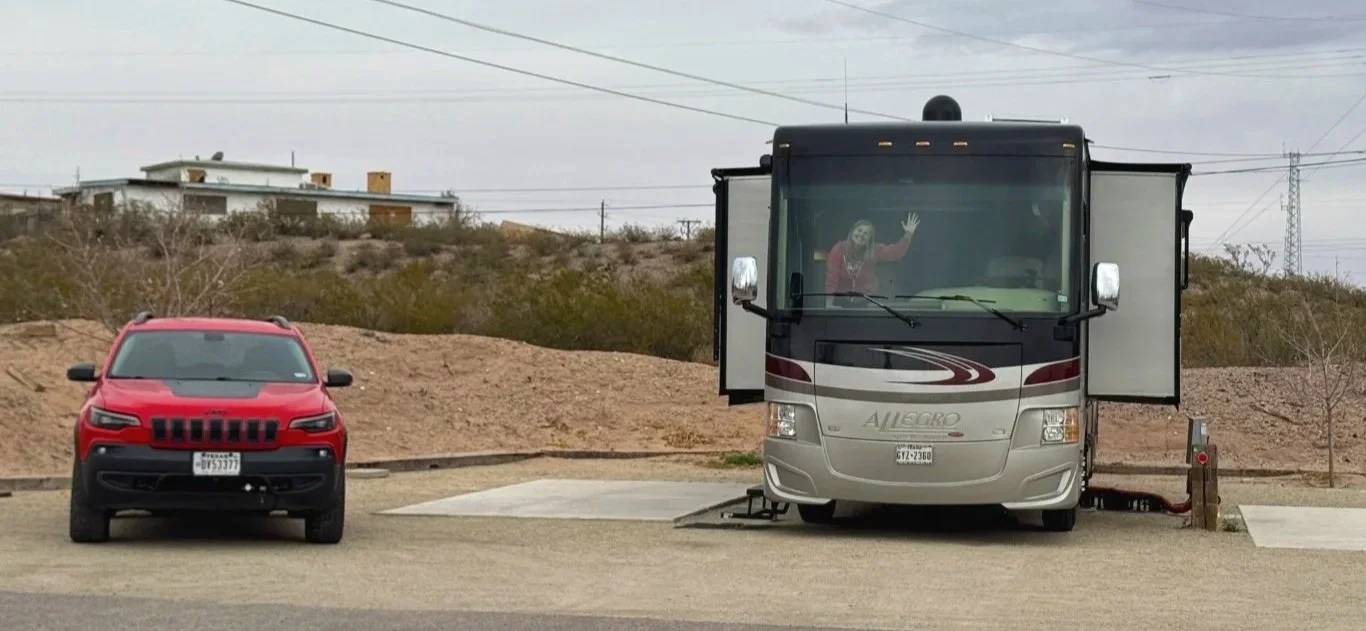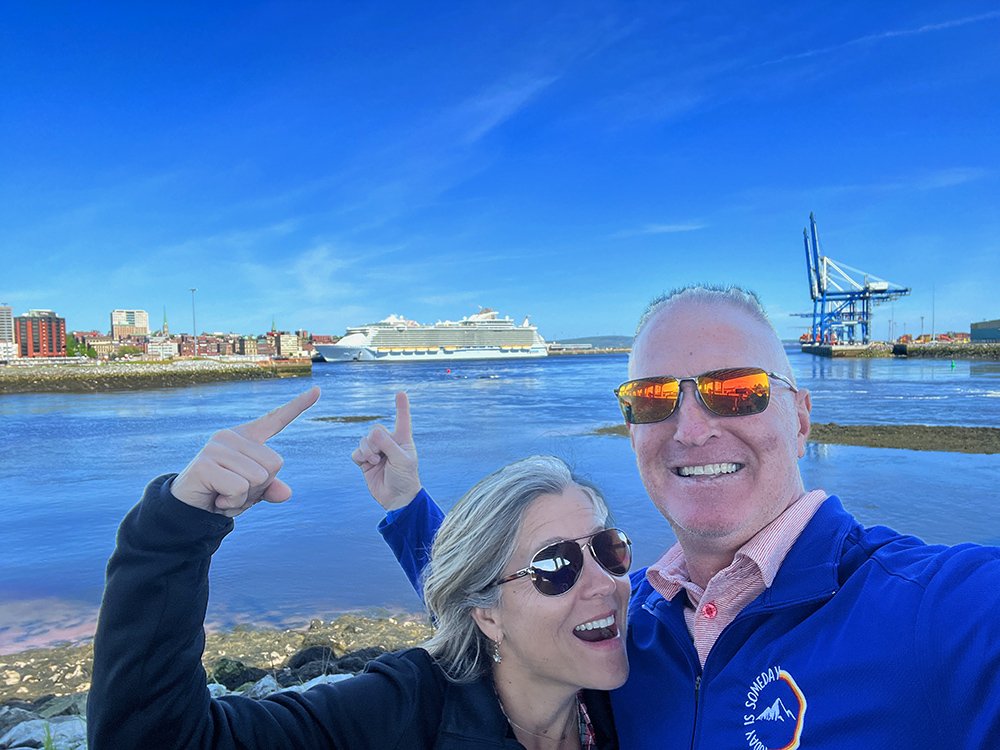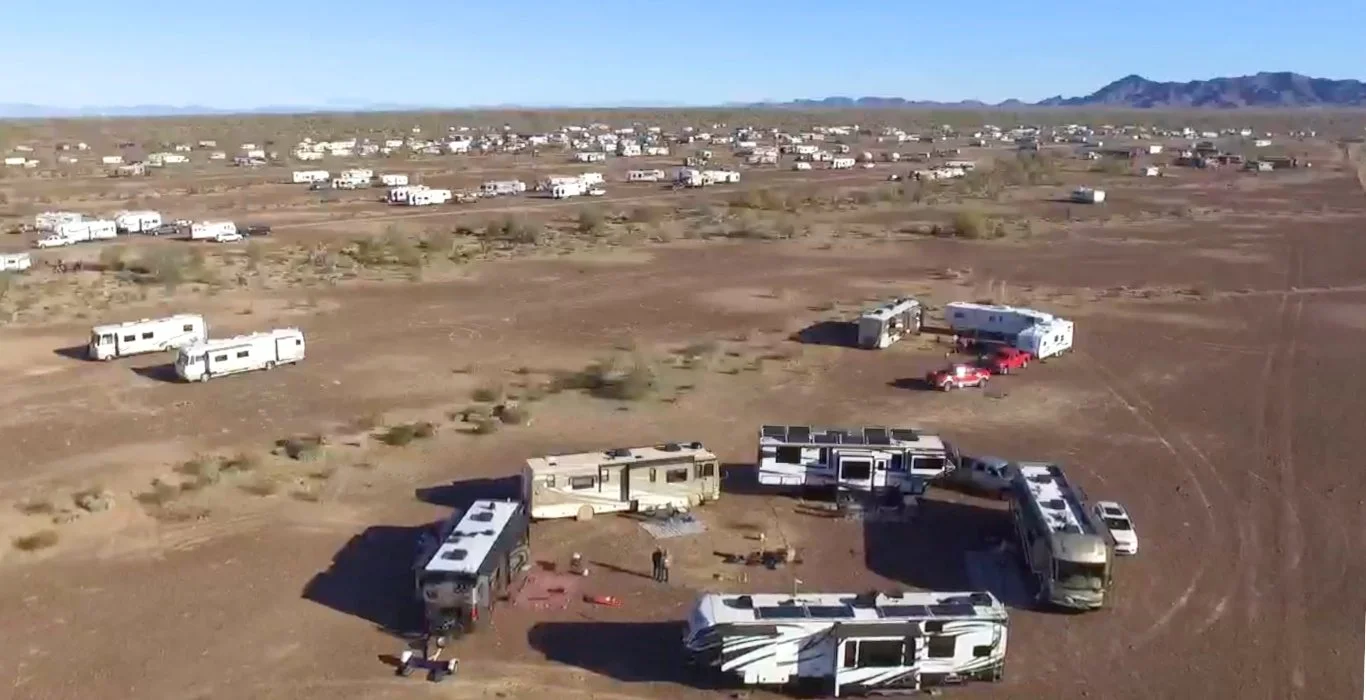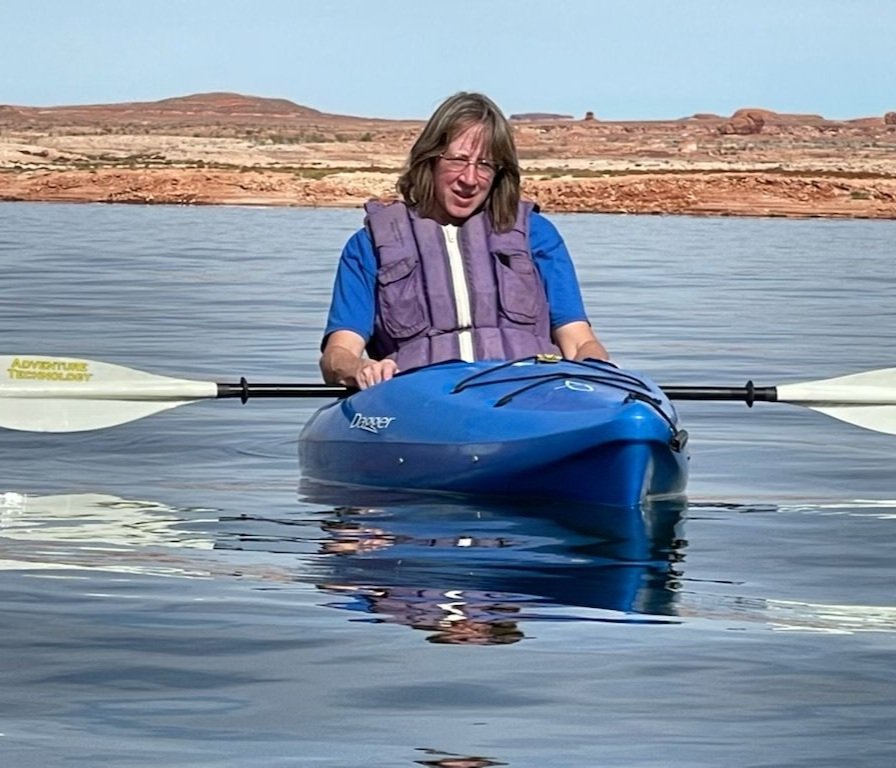Driving Tips for New RVers
Disclosure: The links below may be affiliate links that are at no additional cost to you. When you use our links, we may earn some extra beer money, but it won’t be enough for Phil’s ice cream habit or a batch of Stacy’s famous margaritas (recipe here).
Congratulations on becoming the proud owner of an RV! But let's face it, driving this massive machine can be a little intimidating, especially for first-timers. But fret not, my friend! You don't need any special skills to navigate your way around the open road. However, to avoid potential mishaps, it couldn't hurt to brush up on some tried-and-true tips from RV experts. Buckle up and let's hit the road with confidence!
Start With the Basics
These tips will help you feel more comfortable when you get behind the wheel for your next trip.
1. Practice, practice, practice
Before you embark on epic adventures, you must master the art of turning and backing up - and an empty parking lot is the perfect playground for practice. Bring some cones to help you learn your RV dimensions, turning radius, and tail swing.
2. Shake Down Trips
Take a few “shake-down” trips close to home that will allow you to get comfortable driving the RV and setting up your sewer, water, etc. Plan trips on familiar roads and take your time. These trips will help you ease into RVing and build confidence.
3. RV Driving School
If you're eager to take your skills to the next level, consider enrolling in an RV driving school. Whether you choose the DIY approach or seek professional help, remember to build your confidence before hitting the open road. There are schools nationwide that will help you build your confidence behind the wheel.
4. Plan Your Route
Once you are ready for a big trip, plan your route down to the gas stations. Tight turns and low covers at gas stations can provide obstacles that get you into trouble. Use satellite images to make sure you can maneuver in and out of fuel stops. Truck stops are a great option, and I highly recommend utilizing them. They make fill-ups easy for larger RVs.
Your RV will determine your route
Height: While you won’t have issues on major interstates, driving down small country roads could mean low bridges or tunnels. Most RVs are taller than passenger vehicles, so you will need to learn quickly about the height clearance of roads, service station canopies, and bridges and to watch for low-hanging obstacles such as tree branches. Your owner’s manual and RV manufacturer are the best sources for helping you determine the maximum road height for your RV. We recommend printing it out and placing it on your dashboard for those stressful moments when you can’t think straight.
Weight: Knowing how much your RV weighs is essential for several reasons, including route planning. There are bridges, overpasses, and roads with weight restrictions. The last thing you want to do is get into a situation where you must back down a muddy country road because your RV weighs too much to drive safely across a bridge, as we did in the video below!
Of course, it is also essential to know your RV's weight to ensure you are not overloaded and your tires are at the correct pressure. These are both critical safety issues. Head over to 4 Corner Weigh: The Best Way to Stay Safe Driving Your RV for everything you need to know about adequately weighing your RV.
Length and Width: Your RV's length will affect its turning radius and tail swing. Both are important for safety on the road. Some states have width restrictions on certain roads, so you will need to know that before you head out. Narrow country roads can be more difficult to maneuver with larger RVs.
To make life easy, we recommend that everyone use an RV-safe GPS. It takes the guesswork out of the process. It will route you based on your RV numbers, including weight, length, and height. You can even route it around tolls or avoid specific roads. We are using the Garmin 890 and love it! It is even voice-activated.
If you want the comfort of RV-safe GPS at a smaller price point, try RV LIFE PRO. It is one of their many features and includes the RV LIFE TRIP PLANNER, which I wouldn’t RV without. (Use the link to save 25%: SOMEDAY)
More to RV Driving Considerations
How Many Miles Do You Want to Drive in a Day?
Many RVers use the 3/3/3 rule for driving. This means you don’t drive more than 300 miles per day, three hours per day, and you arrive at your location by 3 p.m.
While this is a great way to structure your travel for maximum enjoyment, sometimes you have to do long hauls to get where you need to be quickly. Just remember driving and towing a large RV can be exhausting! Also, driving at night is much more difficult. We don’t recommend driving your RV at night particularly if you are inexperienced. By the way, setting up your campsite in the dark is never fun!
Once You Get on the Road
While the speed limit may say 70 or 75, we never recommend RVers hit the road at 70 mph. Unfortunately, there is no perfect speed for every RV. They are all as different as the situation and the road they are driving. Reducing your speed could save on fuel costs and keep you safe on the road.
Also driving in the right lane may allow you to pull over quickly if you have an issue with your RV. Having blown two tires on the way to our summer destination, I can tell you, that driving in the right lane helped us pull over quickly and safely.
Still Deciding which RV to buy
Check out these two videos as Phil & Chad show you the differences in driving a Class A and 5th Wheel.
Did you know
1. Stopping Distance
The heavier your RV the longer it will take to stop in an emergency. This is something you will get a feel for once you have been driving for a while. Just keep plenty of room between you and the vehicle in front of you.
According to Peter from the RVGeeks, who drove buses and trained hundreds of professional motorcoach operators (oh, and won an international bus driving competition) “use a 4-second following distance for most RVs. When the roads are wet, use a 6-second following distance. When the road is snow- or ice-covered, use 8 seconds. Keep in mind that these are minimum following distances. There’s nothing wrong with leaving even more space between you and the vehicle ahead of you.”
I know what you are thinking! If I leave that much distance drivers will just move into my lane in front of me. Yes, this is true. But if you drive below the posted speed by 5-10 mph they will quickly increase the distance between you and them, leaving plenty of stopping distance.
2. Check the Weather
Wind can cause issues for high-profile vehicles such as RVs. Watch for crosswinds and keep an eye on trailer sway. If winds get too high you may want to pull off at a rest stop and wait it out. Keep an eye on your weather app for storms or even winter weather as you travel. There is nothing wrong with changing your plans if the weather is going to be a problem.
Remember the faster you’re driving when your RV gets hit with a gust of wind on the side, the more likely you are to lose control. So keep it slow to keep control.
3. Watch your Turns
Turning with a big motorhome or while towing a camper is completely different from turning while driving a car or truck. Figuring out your turn radius and tail swing is important to prevent accidents.
4. Backing into Your Campsite
Have a spotter to help you when you back up into your RV site. Don’t be too intimidated by your friendly RV neighbors who may be watching. If you are a solo RVer get out of the RV as many times as you need to in order to ensure you are positioning the RV in the perfect spot
If you need a spotter, ask your neighbor. There is always someone willing to join in the fun.
5. Driving Your RV for the First Time
Driving your RV for the first time can be very intimidating. Slow and steady is a great way to drive your RV. Taking your time allows you to see what’s going on around you and react quickly. Do not let the drivers around you make you nervous or cause you anxiety. Take all the time you need. Safety is your number one priority.
Newbie RV Drivers
While there are no quick or easy answers to safety when driving an RV, following the steps above can help you get your bearings and get prepared. Before long, you’ll be a master of the road! Even if you make a few mistakes early on — they call it “practice” for a reason — give yourself some grace. After all, even the most experienced RVers don’t always have all the answers either. Take precautions and keep your head on a swivel! You got this!
GET MORE TRAVEL IDEAS, TIPS, UPDATES, DISCOUNTS, PERKS, AND MORE!
GET MORE TRAVEL IDEAS, TIPS, UPDATES, DISCOUNTS, PERKS, AND MORE!
Every Saturday, Phil & Stacy publish the Today Is Someday Newsletter, where they share weekly articles about all things RV and travel. Each week they scour the internet for articles that will inspire and inform you. They also share discounts, sales, and freebies! So don’t miss out! Sign up for the newsletter below.
THANKS FOR DROPPING BY
Phil and Stacy
Today Is Someday
About the Author: Terri Nighswonger and her husband, Todd, are well-traveled RVers and work campers. They've work camped from Maine to Arizona with their Cavalier King Charles Spaniel, Newton, and their Minnie Australian Shepherd, Remi.
They love Arizona, where winter coats are a thing of the past. They plan to enjoy the West for a while. Writing is Terri's passion, but she also loves hiking, kayaking, walking her dogs, and anything she can do outdoors.



